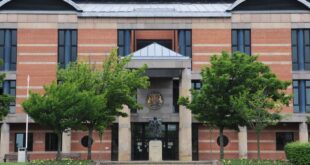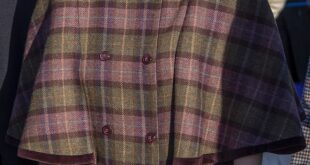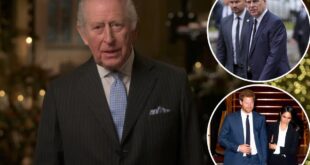People reach for the first copies of Andrew Morton’s reissued book about the life of Diana, Princess of Wales entitled Diana, Her True Story – In Her Own Words on Oct. 3, 1997.Peter Jordan/The Associated Press
Long before British royal biographer Andrew Morton wrote his famously candid and controversial Diana: Her True Story, In Her Own Words in 1992, Marion Crawford, a governess to the young princesses Elizabeth and Margaret, wrote a charming, but unauthorized book in 1949 about the royal sisters entitled The Little Princesses. To say that the biography – released 16 years after Crawford retired and written against the wishes of Princess Elizabeth, who was by this time in her early 20s, and her mother – ruffled a few royal feathers would be an understatement.
For the most part, the book gave insight into what it was like for the sisters to grow up as members of the Royal Family during the 1930s and the Second World War. But while “Crawfie,” as she was affectionately called by the Royal Family, wrote warmly of the princesses, there were also spots that were critical of the Queen Mother’s parenting, namely her casual attitude toward the formal education of her daughters. The former nanny even claimed that King George VI and his wife were disheartened at not having had a son. The book also touched on the King’s tantrums and alluded to his wife’s aloofness with her in-laws.
Though the memoir was popular among the public, Crawford lost Nottingham Cottage (the house on the grounds of Kensington Palace that had been given to her for life), as well as her place in the House of Windsor’s good books. They ended all contact with her.
Two years later, the Royal Family was put out once again when the exiled Duke of Windsor – who fell from grace after abdicating his throne in 1936 and marrying the twice-divorced American socialite Wallis Simpson – wrote his autobiography, A King’s Story: The Memoirs of HRH The Duke of Windsor. In addition to delving into his youth at Sandringham, his years at Magdalen College at Oxford, and his time in the army during the First World War, the book also divulges how he had defied the wishes of Prime Minister Stanley Baldwin when he insisted on marrying the “wrong” woman.
Both The Little Princesses and A King’s Story created waves for their contentious content, which was far from common at the time, Morton tells The Globe and Mail. “In the past, for the most part, royal biographies were pleasant, uncontroversial tomes that – like an ocean liner on the horizon – sailed into view and soon disappeared.”
:format(jpeg)/cloudfront-us-east-1.images.arcpublishing.com/tgam/2LRH6RYFCBA4XAHAPG5EAN2MJE.jpg)
Queen Elizabeth II and Princess Margaret, right, attend the West Norfolk hunt point-to-point races in Sporle, England.The Associated Press
Diana, Her True Story turned the tide on this tradition of British royal biographies. What was revolutionary was that the book flipped the ruling narrative about her life – with the co-operation of Diana herself. Up to this point, Diana was believed to be powerful in her position as Princess of Wales and primed to be the country’s future queen, but the book portrayed her as having fallen victim to her husband’s adultery and been sidelined by an establishment that chose to look the other way.
The book didn’t just uncover the real truth about Diana’s life, it also turned the public’s opinion of the Royal Family on its head. “It changed the public perception to the point that it’s the story we tend to stick with today – whether or not it’s the complete truth,” says Canadian royal commentator Saad Salman.
Morton’s book made headlines across the world and was wildly successful – it is believed to still stand as the most lucrative royal biography of all time.
Publishers across the board took note: Suddenly the book industry, as well as newspaper and magazine editors, wanted big stories about the Royal Family with named sources. In fact, Diana, Her True Story instigated a movement for similar-style royal biographies that is still reverberating more than 30 years later, with the release of titles such as Finding Freedom, about the decision by Prince Harry and the Duchess of Sussex, Meghan Markle, to break away from the royal fold, and Tina Brown’s The Palace Papers, about the aftermath of the Diana years and how the Royal Family had to revive its reputation as a result.
Morton’s own storied career consists of 25 royal biographies and counting. In fact, his new biography on the late Queen, entitled The Queen: Her Life, is due to come out this fall. But what is behind the decade-upon-decade, enduring public intrigue for these kinds of books?
The appetite for royal memoirs and biographies goes back at least 150 years. In 1868, Queen Victoria published her own volume of excerpts from her personal journals about her time spent in the Scottish Highlands – readers were interested in how she spent her time away from the public eye.
“Some of her ministers were concerned that her published recollections of picnics and horseback riding would indicate a life of leisure rather than a commitment to royal duties and carrying out her constitutional role,” Canadian royal historian and author Carolyn Harris said.
Ingrid Seward, the editor-in-chief of Majesty Magazine and a royal biographer in her own right, says the person who really commands credit for the modern obsession with royal biographies is author Robert Lacey. His 1977 profile of the Queen entitled Majesty: Elizabeth II and the House of Windsor decodes some of the intrigue, image and mystique behind the monarch who had never given an interview in her lifetime.
The book – which follows Queen Elizabeth from being the country’s favourite child to a highly intelligent and politically savvy symbolic head of state – balances the lighter aspects of her life, such as her love of the Beatles’ Yellow Submarine, with the heavier parts of her role, such as navigating the Suez Canal crisis and pledging herself to the motto “reign, not rule” amidst revolving governments.
“Lacey’s biography was the go-to for potential royal authors like myself,” says Seward. “There were lots of serious biographies on the Queen at the time, but this one had the quality of being more sensitive and personal. It was the title of this book that gave us the idea of what to call the magazine.”
Not all biographies are made equal, and some even fall into a hierarchy of sorts. The most noteworthy of them are the memoirs written by members of the family themselves, says Salman.
These are few and far between – but also the most fascinating. “They don’t say everything and they don’t cover all aspects, but they give personal insight and firsthand information that doesn’t involve hearsay, so they’re as close to the truth as they can get,” he says.
The Queen’s cousin, the Honourable Margaret Rhodes, wrote an autobiography in 2011 on life with her royal relatives, and more recently, another cousin to the Queen, the Duke of Kent, released a memoir in 2022. Of course, in light of Her Majesty’s recent death, Prince Harry’s highly anticipated memoir has been reportedly pushed back to next year.
The most revealing of royal bios tend to be ones from royals who have gone rogue, so to speak – such as Diana, the Sussexes and Sarah, Duchess of York, who collaborated on and wrote a couple of her own books. However those approved and signed off by The Firm – as palace officials are known – can also offer some up-close-and-personal insight. These also attract a wide readership, adds Harris, the Canadian author and historian. “Memoirs written by royal cousins who remain close to the Royal Family often include unexpected glimpses of the challenges of royal life.”
:format(jpeg)/cloudfront-us-east-1.images.arcpublishing.com/tgam/WMMVH3LUDZH7LGM46KOTOSMLKU.jpg)
Portraits of the monarch abound aboard Cunard’s Queen Elizabeth, a 294-metre ocean liner, which is the second largest in the British cruise company’s fleet.Handout
Even though Queen Elizabeth’s aunt, Princess Alice, the Duchess of Gloucester, devoted much of her memoirs to her travels, charity work and time as viceregal consort of Australia, she revealed that the Royal Family provided her with little training in her new role after her marriage.
Going further back, Princess Marie Louise, a granddaughter of Queen Victoria, made clear that her marriage was unhappy in her 1956 memoir, My Memories of Six Reigns.
Another granddaughter of Queen Victoria – Queen Marie of Romania – was very open in her memoir, The Story of My Life, in 1934 about the personal challenges that she faced in her role. Acclaimed author Virginia Woolf, who reviewed the book, said that Queen Marie displayed an enormous amount of candour for a member of the Royal Family.
In more modern times, a 1994 authorized biography on Prince Charles entitled Charles: The Private Man, The Public Role, was written by Jonathan Dimbleby, to whom the Prince of Wales gave access to 10,000 personal letters and diaries. In addition, there were a number of in-person, in-depth interviews, and this all led to a book that was considered almost reckless.
Not only did the Prince admit to adultery with Camilla Parker Bowles, but he also acknowledged having been compelled into an arranged marriage with Diana by his father. The book went over the top in another way: It dared to address the Queen as an emotionally distant mother.
Interestingly, in his 2004 book, Philip and Elizabeth, the Duke of Edinburgh’s official biographer Gyles Brandreth gives an anecdote of how, as a child, Prince Charles went to his mother’s study and asked if she would play with him, to which Her Majesty wistfully responded: “If only I could,” and gently closed the door.
Despite the sheer volume of books that are published on the Queen and her family – including Morton’s own more recent biography on the late monarch entitled Elizabeth and Margaret, The Intimate World of the Windsor Sisters (2021) – the Queen herself always managed to avoid any real mark to her reputation.
“That’s because even authors who are critical of the monarchy as an institution usually admire the Queen’s seven decades of public service,” says Harris. “Not to mention members have valued their personal rapport with the monarch even if they were critical of other aspects of royal life.”
Even before the latest weekly edition of Hello! Magazine hits newsstands, we are able to get our royal fix in close to real time when members of the Royal Family step out for public and charity events. In this regard, one has to wonder if reading royal biographies will eventually be relegated to a pastime of the past.
“Social media is a good resource for learning about how the Royal Family is perceived at the moment,” says Harris. Indeed, reactions to royal speeches, tours and public engagements that appear on social media receive quick responses that are informed by their immediate circumstances.
“Royal biographies, by contrast, allow for analysis of wider trends over many years or decades and give comparison of how these events were perceived at the time and how they are remembered quite some time later,” says Harris.
Perhaps the Queen was playing the long game all along.
Source link



